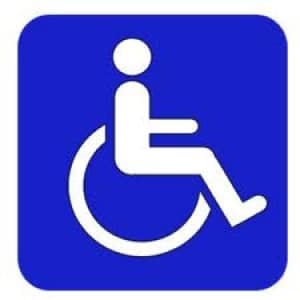Free Consultation
Free Consultation
Sasha Blair-Goldensohn is a Google executive and an activist for the rights of disabled individuals. His New York Times’ opinion piece on navigating the NYC subway system in a wheelchair recently went viral. Not only does he highlight infrastructure problems with the MTA but he also brings up the question of premises liability. After all, is there not regulation requiring accessibility? Additionally, if the MTA does not have wheelchair accessibility, could he or anyone in a similar situation as him sustain an injury as a result?

Blair-Goldensohn documents his grievances with the NYC subway system. First, only 92 out of 425 subway stations are wheelchair accessible. This means about 78% of subways stations are not accessible to people in wheelchairs. Also, most of the stations with accessibility are in Manhattan and not the outer boroughs. Second, the subway elevators largely don’t work. Most of the time, the elevator is out of service and repairs take a long time. Furthermore, the MTA has inaccurate information regarding which elevators at which stations are out of service. In effect, many wheelchair passengers can find themselves trapped on subway platforms.
This first person experience raises many concerns. The biggest one is how can the MTA get away with not providing services for wheelchair passengers? Especially since, this is not the first article to document such an issue.
According to title 42 of the United States Code, “Subject to the provisions of this subchapter, no qualified individual with a disability shall, by reason of such disability, be excluded from participation in or be denied the benefits of the services, programs, or activities of a public entity, or be subjected to discrimination by any such entity”. Commuter authorities, such as the MTA, must apply to specific standards as outlined by the Americans with Disabilities Act (ADA). Although, some exceptions do apply in certain cases. However, these exceptions do not apply to every non-compliant MTA station.
According to the New York Court of Appeals, property owners are “charged with the duty of providing the public with a reasonably safe premises, including a safe means of [entering and exiting].” When a property owner’s negligence creates an unsafe environment, one can be held liable in court. So, if negligence leads to a failure to comply to ADA standards and a disabled person sustains injury as a result, that person may have a case on their hands.
Currently, there are lawsuits against the MTA concerning ADA standards. In the meantime, what should a wheelchair passenger do if one sustains injury in a MTA station due to lack of accessibility? In general, evidence that the injury occurred due to the negligence of the property owner is necessary. This evidence can include pictures of the property and in the case of disabilities, the relevant parts of the ADA.
To file a claim in New York City, certain actions are necessary. First, it is best to have a record of the condition that caused the incident. Luckily, MTA keeps their stations well-documented and Blair-Goldensohn brought this issue to their attention in a very public way. Second, the plaintiff must provide “actual written notice of the condition” within 15 days. Finally, submit the Notice of Claim within 90 days of the incident. A lawyer can help one navigate the legal process.
Do you need a premise liability lawyer? Contact one of our experienced attorneys today by filling out our convenient online form or calling (800) 762-9300 today.